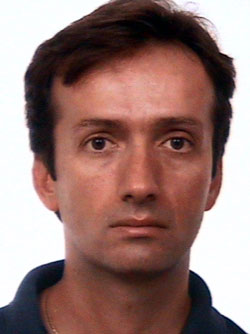 On April 17, we have the pleasure to welcome Professor Christos
On April 17, we have the pleasure to welcome Professor Christos
Panagopoulos(lien) from Nanyang Technological University, Singapore. He
will give us a seminar which will take place at SPINTEC room 434A at 11:00
Recent advances in thin film growth and in calculation capabilities in condensed matter physics enabled the synthesis of atomically flat surfaces and heterostructures, and the prediction of their electronic properties. Progress on Rashba interfaces, symmetry protected states and non-collinear spin textures allow novel spin, charge phenomena to emerge often robust to disorder and thermal fluctuations, with much promise for room temperature applications.
Using particle-like spin structures as a paradigm, I will argue the states induced by engineering spin orbit coupling and inversion symmetry breaking open a broad perspective, with significant impact in the practical technology of spin topology (Fig. 1). In one such example, multilayers of Ir/Fe(x)/Co(y)/Pt enable us tailor the magnetic interactions governing skyrmion (Sk) properties, thereby tuning their thermodynamic stability parameter by an order of magnitude. Sk’s exhibit a smooth crossover between isolated (metastable) and disordered lattice configurations across samples, while their size and density can be tuned by factors of 2 and 10, respectively.

: (a-c) Projection of a Néel skyrmion texture: (a) Original 2D configuration. (b) Outermost spins gradually curve inwards, eventually closing up, giving (c) 3D spin configuration of a unit sphere.
Using this material platform for Sk-studies, I will discuss first a systematic investigation of the magnetization dynamics. Here, we determined the damping parameter characterizing the magnetization response, and identified a gyrotropic Sk excitation that persists over a wide range of temperatures and across varying sample compositions. Next, to tailor the phenomenology of nanoscale Sk’s, including topological stability and malleability we studied their formation and evolution at zero field through confinement effects. Notably, confinement-induced stabilization of room temperature Sk’s at zero field in nanodots occurs over a wide range of magnetic and geometric parameters. The zero field Sk size can be as small as 50 nm, and varies by a factor of 4 with dot size and magnetic parameters. Time permitting, I will mention a detailed microscopic investigation which allowed us identify magnetic structures forming via Sk-Sk interaction and their role in designing and interpreting electrical signatures in materials exhibiting spin topology.
Through these studies, I will discuss quantifiable insights towards understanding Sk stability and dynamics in multilayers, and immediate directions for exploiting their properties in nanoscale devices.




